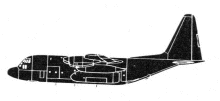Incident Overview

Description
The day before the accident, the Lockheed Hercules was being used to conduct a United Nations charter flight from Darwin to Dili in East Timor. During the approach for landing, when the landing gear was selected down, the main gear indication showed that the left main gear had not fully lowered. The crew checked the electrical and hydraulic systems but no fault was found. They also reported that after a fly-past of the control tower, the air traffic controller advised that the gear appeared down and locked. The crew then cycled the gear up then down and it lowered normally with the indication showing the gear down and locked. The landing at Dili was made without further incident. The flight engineer reported that he inspected the landing gear after landing at Dili and found no faults in the landing gear system. He said that he suspected that a micro switch might have been the cause of the indication. The aircraft operator did not have any maintenance personnel stationed at Dili and the crew did not report the problem to the operator’s maintenance organisation. The aircraft returned to Darwin the next day. At about 1000 (CST), while the aircraft was on approach to Darwin airport, the crew lowered the landing gear. The nose and right main gear indicators showed that the respective gear was down and locked but the left main gear position indicator showed unsafe. Still suspecting an indication problem, the crew raised and lowered the landing gear several times, but the left main gear indicator continued to show an unsafe condition. The crew conducted a fly-past of the control tower and the controller confirmed that the left main gear was not down. Having confirmed that the nose and right main landing gear operated correctly and that the left main landing gear would not move, the pilot in command allocated flying duties to the copilot. The pilot in command and flight engineer conducted the checklist actions and attempted to lower the gear using the emergency procedures. The attempt to lower the gear hydraulically by using the landing gear override selector valve was unsuccessful. An attempt to lower the gear using the manual drive failed because the emergency engaging handle could not be moved. The flight engineer unsuccessfuly attempted to manually move the shift lever on the forward gearbox of the left landing gear from “power” to “manual” and the loadmaster then attempted to lower the gear by disconnecting the universal joints on the vertical torque shafts of the left landing gear. However, the castellated nuts on the bolts of both wheel vertical torque shaft universal joints could not be undone without using a spanner. Even using a spanner, only two of the four nuts had been undone after about 30 minutes. At about 1020, the crew of a C5 Galaxy military cargo aircraft also inbound to Darwin advised air traffic control that their aircraft was experiencing a hydraulic problem. Twenty minutes later, the crew of the Hercules informed air traffic control that the aircraft would be making a gear-up landing. The pilot in command requested that the airport’s Rescue and Fire Fighting Service (RFFS) lay a foam path along the last two thirds of Runway 36. The air traffic controller informed the crew that a landing on Runway 29 was preferred and that the L-382 was number two in the “emergency landing sequence”. Air traffic control intended that the Galaxy land first followed by the Hercules. The air traffic controller later informed the Hercules crew that the airport RFFS advised that laying foam was not standard procedure. The controller also advised that if foam was laid, no foam would be available to attend the aircraft after it landed. The pilot in command was concerned about the potential for fire caused by sparks during the landing and he requested a clearance from air traffic control to perform the landing on the grass alongside the runway. By the time two of the nuts on each of the universal joints had been undone, the fuel state of the Hercules was approaching 1,500 lbs or about 20 minutes endurance. The pilot in command decided that due to the low fuel state, there was insufficient time to undo the remaining nuts before a landing was required and he advised the controller of the aircraft’s low fuel state. Concerned at the chances of the aircraft slewing off the runway after touchdown, the pilot in command also decided that the nose and right main landing gear would be raised for the landing. The Hercules was cleared to track for final approach Runway 29. The Galaxy diverted to the Royal Australian Air Force Base at Tindal. The pilot in command subsequently decided that it would be more prudent to land on the runway because of possible obstructions on the grass area. After briefing the passengers, the crew conducted their own emergency briefing, including actions after touchdown, shutdown actions, and evacuation routes. The pilot in command assumed control of the aircraft during final approach and conducted the gear up landing. At 1104, the Hercules landed on Runway 29. Touchdown was made at approximately 90 kts and the aircraft slid about 300 metres before stopping adjacent to Taxiway D. The aircraft remained straight on the runway and none of the crew or passengers were injured. They evacuated the aircraft soon after it came to rest. Although a flash fire erupted at the rear lower fuselage area while the aircraft slid along the runway, the fire did not spread. The RFFS applied foam to the area around the aircraft after it came to a halt.
Source of Information
https://www.atsb.gov.au/publications/investigation_reports/2000/aair/aair200000618https://www.atsb.gov.au/publications/investigation_reports/2000/aair/aair200000618Primary Cause
Micro switch malfunction leading to an indication of a down gear state.Micro switch malfunction leading to an indication of a down gear state.Share on:




